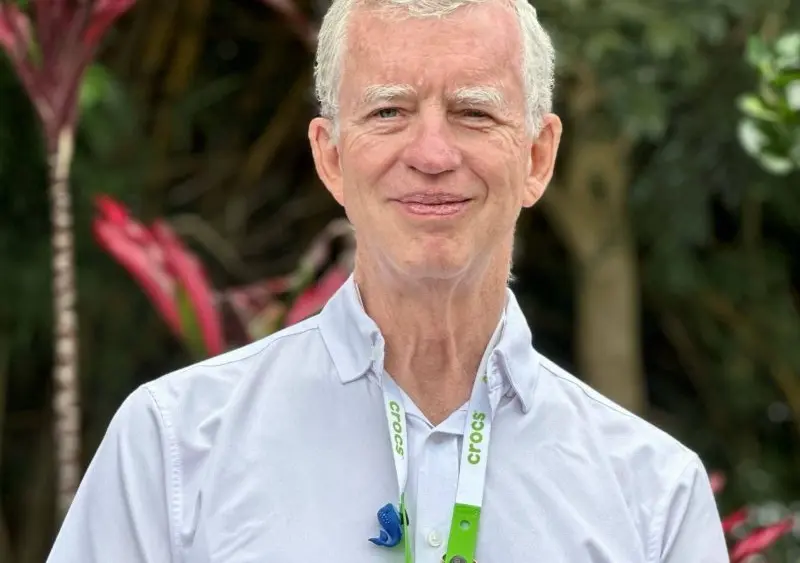Despite some daunting setbacks, executives with the Thirty Meter Telescope aren’t giving up on their plans to build it on Mauna Kea, and are investigating the possibility the observatory could be constructed on a site where an old telescope was decommissioned and torn down.
Gov. Josh Green and the entire Hawaii congressional delegation signed a letter last month promising to work with state officials to establish a permitting process for construction on the sites of decommissioned telescopes on Mauna Kea.
That letter to the chair and co-chair of the board of directors of the Thirty Meter Telescope International Observatory acknowledges “your commitment to addressing the Hawaii community’s request for a possible relocation to a disturbed site” on the mountain.
Construction of the telescope near the summit of Mauna Kea stalled in 2019 as protests erupted on the mountain, attracting thousands of project opponents from across the state. Those protests became a powerful rallying point for Hawaiians, including some who consider the mountain to be sacred land.
The protests ended with the onset of the pandemic in 2020, and construction has remained in limbo ever since. Years of delays caused the total estimated cost of the TMT project to grow to $3 billion, according to TMT Project Manager Fengchuan Liu, and TMT now has “a pretty big funding gap.”
The funding shortfall for TMT at this point is about $1 billion, he said, but that could change depending on when construction would begin.
Money And Other Challenges
The National Science Foundation announced earlier this year it had opted to fund a different large telescope project in Chile, a decision that Liu called “a major challenge.” But TMT planners are working on a solution to that problem.
TMT backers have approached Congress for funding via the NSF, and Liu said in an interview Monday the Senate draft of the 2026 federal budget includes language explicitly supportive of funding for TMT as well as the Extremely Large Telescope being built in Chile.
The House draft supports the development of large telescopes, but does not mention TMT specifically.
“We’re working through that, we have a lot of support from the Hawaii congressional delegation, we very much appreciate it, and the governor as well, but it’s hard to predict in these days how the congressional appropriation process will work out,” Liu said.
U.S. Rep. Jill Tokuda, who represents rural Oahu and the neighbor islands, said in an interview Monday that she and other lawmakers plan to send a bipartisan letter to leadership of the House Appropriations Committee to ask for an amendment to the House draft of the budget bill to include language similar to the Senate version.
She said she believes the letter signed by Green and the Hawaii congressional delegation was intended to demonstrate a unified position in support of TMT.
Tokuda acknowledged some TMT critics continue to oppose the project, and said finding a balance between culture and the advancement of science “will take courage — community and political courage as well. This is something that can be a huge benefit to Hawaii island, to Native Hawaiians, to many.”
Green said in the letter that “we look forward to working with TIO and the broader community to honor the shared responsibility for stewardship of Maunakea and the success of this project.”
Makana McClellan, director of communications for Green, said the governor “will stand on his letter,” and declined further comment.
Sen. Brian Schatz also said through a spokesman that he would not make any further comment, and Sen. Mazie Hirono and Rep. Ed Case did not respond to requests for comment Monday.
Pua Case, who describes herself as a protector of Mauna Kea, said the letter is another example of political leaders disregarding TMT’s opponents.
She said they have been collecting signatures of people opposed to construction on Mauna Kea for more than a decade, and now have nearly 500,000 signatures.
That petition demonstrates the opponents of the project “are more than some Hawaiians and our allies,” she said. “We are many, many more than that, and we must safeguard our sacred lands and Mauna Kea and our Hawaii.”
“Throughout the years, Native Hawaiians, communities throughout Hawaii and around the world have stood, sacrificed and worked together to safeguard our sacred lands including Mauna Kea and our Hawaii,” she said. “We have remained unified for a mauna that brought us together in ways that we never thought possible.”
The Thirty Meter Telescope has been in the planning stages for years and has a state conservation district use permit authorizing the project to move forward, but opponents have filed challenges in an attempt to invalidate it.
What ‘Disturbed’ Site?
The idea that new facilities could be built on the site of a decommissioned telescope on Mauna Kea was included in Act 255, which state legislators passed in 2022. That law also established the Mauna Kea Stewardship and Oversight Authority as the sole authority for the management of lands on Mauna Kea.
The law prioritized “the reuse of footprints of observatories that are scheduled for decommissioning, or have been decommissioned, as sites for facilities or improvements over the use of undeveloped lands for such purposes.”
The Caltech Submillimeter Observatory and the University of Hawaii Hilo Hoku Kea Observatory have been decommissioned and removed from Mauna Kea, but nothing else has been built on the sites where those telescopes once stood.
Green promised in the letter that his administration will work with the Mauna Kea oversight authority and the university “to establish a clear and transparent procedure for obtaining the necessary permits associated with a decommissioned site.”
Longtime TMT opponent E. Kalani Flores said there are no decommissioned telescope sites on Mauna Kea large enough to accommodate the Thirty Meter Telescope.
“The size and scope of the TMT is so huge and massive that it wouldn’t even fit on that site,” he said of the Caltech telescope site. “The question is, what disturbed site is there?”
Flores also noted the use of NSF funding for the TMT project would trigger a requirement for a federal environmental impact statement and a cultural consultation, “so we’re talking about years away from it ever happening.”
“What we’re seeing now is it appears that the governor and the congressional members are trying to make decisions excluding any input from Native Hawaiians in particular, and we have concerns in that regard, of course,” he said.
Story originally published by Honolulu Civil Beat and distributed through a partnership with The Associated Press.
AP Photo





